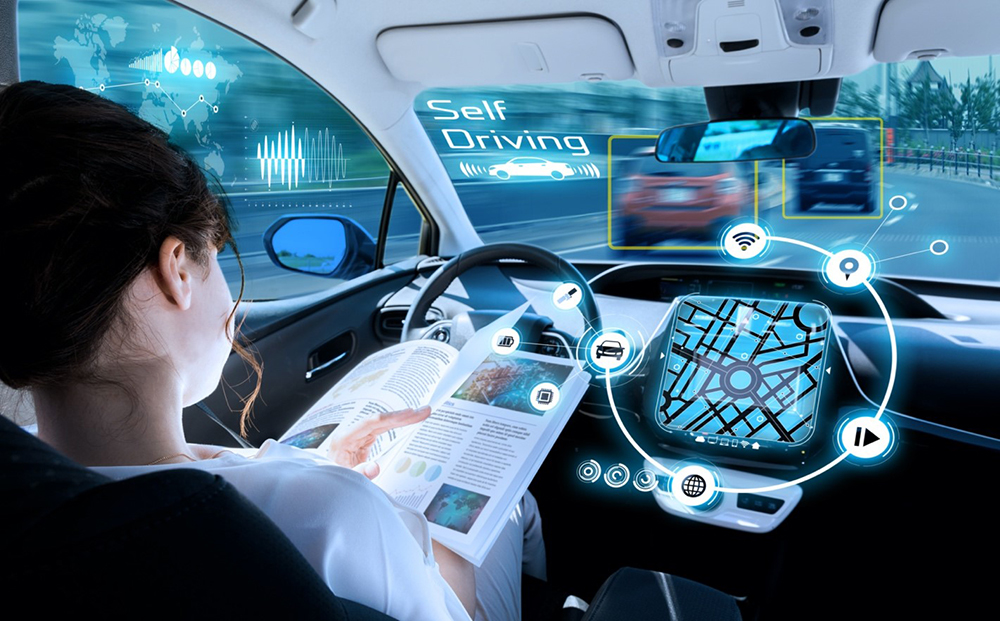Tech
How to Use Technology in Ecommerce
ecommerce tech trends
Use Technology in Ecommerce: To make the most of new technologies, brands need to familiarize themselves with them and evaluate their effectiveness in meeting consumer demands. This article looks at chatbots, cloud ERPs, and AI-driven algorithms. It provides practical tips and examples for brands to use these technologies in their online stores. Then, you can start experimenting with them to determine their effectiveness.
Custom mobile apps
There are several reasons why you should use custom mobile apps in ecommerce. First of all, they help you boost your conversion rates. If you are selling a product online, it is very important to get as many sales as possible. Using a mobile app will boost your sales by up to 130%. Not to mention, it can increase the overall customer experience by offering new features.
Second, ecommerce apps help you increase customer satisfaction and brand recognition. Moreover, these apps can even double your efficiency and conversion rates. The current trends in ecommerce app development include Omni channel commerce, subscription-based models, voice search, and artificial intelligence. Additionally, you should choose an app that features convenient registration and payment options. Lastly, you should integrate features that will encourage user loyalty.
Another reason to use custom mobile apps is because they allow you to connect with your customers wherever they are. As soon as a consumer downloads an app, the brand’s recognition begins to increase. With a mobile app, you can communicate with your customers, share information, and tell them about new products or special deals. The mobile app should also provide great value to your users, inspire them to give your business good reviews, and provide an optimized mobile experience for every platform.
Additionally, an eCommerce app allows you to offer exceptional customer care to your customers even after they’ve purchased the product. Unlike in a traditional physical store, eCommerce customers can’t interact with the staff, but they can contact your business via a live chat window, e-mail, or helpline to get a quick answer or solve an issue. This type of service ensures a smooth shopping experience for the consumer and gives them peace of mind when purchasing a product.
Chatbots
In ecommerce, chatbots are an excellent way to engage with customers. They can help answer basic questions and direct shoppers to products based on their preferences. If implemented correctly, eCommerce chatbots can save businesses up to 30% on their customer service costs. In addition to answering questions, chatbots can help businesses build brand loyalty and increase conversions.
ecommerce chatbots can be highly beneficial for businesses of any size. They allow brands to connect with customers on their terms and reduce cart abandonment rates. However, chatbots cannot completely replace human customer service and can’t handle sensitive issues. Therefore, companies should carefully consider their goals before implementing chatbots into their ecommerce sites.
First of all, chatbots should be conversational. This means that they should sound like real humans and answer questions from customers in natural language. In addition, chatbots should be fed with fresh information on a regular basis. This will help them learn. As the chatbot is trained and becomes more proficient, its responses should improve.
Secondly, chatbots should help businesses educate customers about their products. For example, a chatbot can analyze a visitor’s cart and wish-list and recommend better products. This results in increased sales. Finally, chatbots can assist ecommerce businesses in improving the customer service experience.
As of 2018, more than 80% of businesses are using chatbots and plan to implement them by 2020. The use of AI bots isn’t just a trend, and the right bot can help them stand out from the competition. However, businesses should understand chatbot technology and its different types before creating one.
Cloud ERPs
Cloud ERPs for ecommerce are software systems that enable businesses to use cloud-based technology for efficient operations. These systems help teams to generate reports and track profitability, review product information, and manage customer relationships. They also feature integrated internal messaging systems that allow users to communicate directly within the system. This eliminates the need to switch between programs and allows teams to share documents and links.
Ecommerce businesses often have information that needs to be updated in real-time, such as customer information. Using a Cloud ERP will eliminate the need to manually update this information. Having data updated in real-time can eliminate human errors and maximize the effectiveness of customer service. This functionality makes it possible to improve customer satisfaction and reduce costs and time spent on manual data entry.
Cloud ERPs for ecommerce tech trends are available from a variety of providers. Some are more affordable than others. A free version may be all you need to get started. But if you have a budget and want to take your business to the next level, consider paying for a more premium edition. Some Cloud ERPs offer extra features, such as integration with third-party systems.
A cloud ERP is flexible and scalable. If your business grows and needs more capabilities, cloud ERPs are the right choice. The cost of hosting, hardware, and support is significantly lower with a cloud solution. Plus, cloud ERPs increase operational efficiency and offer real-time reporting. These features make them the ideal choice for growing ecommerce companies.
Ecommerce companies rely on accurate data management to remain competitive in the marketplace. Keeping all data and processes organized ensures that their ecommerce website and inventory are accurate and current.
AI-driven algorithms
AI-driven algorithms can predict customer behavior and preferences and can improve the customer experience. For example, AI can help a retailer predict the demand for a product. A popular example of this is Starbucks, which uses AI to personalize the customer experience with recommendations. The algorithm takes into account the customer’s previous purchase history, third-party data and context to create personalized offers. Another popular AI tool in ecommerce is the intelligent agent negotiation system, which matches buyers and sellers to facilitate transactions.
The role of AI in ecommerce is increasing, and many businesses are exploring its potential. It can improve customer experience, generate new leads, and optimize sales. In fact, AI is helping many companies to understand their customers better. According to Amir Konigsberg, CEO of the Israeli startup Twiglet, AI-driven algorithms can make ecommerce search engines think like people, overcoming the problem of irrelevant product results.
AI-driven algorithms can also improve the user experience on ecommerce sites. It can also analyze business and customer data. These technologies utilize data mining, natural language processing, and machine learning, which involves applying past experience and patterns to future situations. The benefits of AI for ecommerce are many, and will be significant for many companies in the future.
AI technology has created a new competitive advantage for businesses and developers of all sizes and budgets. One such example is Pinterest’s recent update to its Chrome extension, which allows users to search through any photo online by selecting the item they’re interested in. The AI software in the extension recognizes the item, surfacing similar products. Other ecommerce websites are developing their own visual search capabilities.
Email marketing automation
With email marketing automation, ecommerce businesses can send out timely messages to customers with the right content. This can increase open rates, click-through rates, and conversion rates. Additionally, it can reduce bounce rates and cart abandonment rates. This way, they can leverage their time for more profitable endeavors.
While ecommerce marketing automation is helpful for businesses, it can also be costly. Many small businesses don’t have the budget to use automated tools. However, with the right automation tool, they can increase their revenue by as much as 1%. By implementing a marketing automation program that streamlines the sales funnel, ecommerce businesses can save time and money, and maximize their sales.
One of the best benefits of email marketing automation is personalization. According to statistics, up to 70 percent of people only interact with personal messages. Marketing automation can make this process easier by segmenting email lists and personalizing content. By creating an automated system, ecommerce marketers can send emails to their customers based on what they know about their customers and their interests.
If you have a website, you can use a cloud-based email marketing automation solution such as Klaviyo. This platform provides a drag-and-drop interface to automate email campaigns. It also offers features like email tracking, analytics, and a built-in social sharing tool. And it’s free to use.
Ecommerce marketing automation can free up valuable time for CRM managers, merchandisers, and marketers. This allows them to focus on more profitable tasks. Automated marketing can help ecommerce clients recapture up to 30 percent of their revenue.


Tech
Modern AI Navigation: 3 innovative options for use

Machine learning and deep learning are integral to various industries. Ground transportation systems leverage predictive algorithms to optimize travel flows, forecast congestion, and enhance fuel efficiency. Now, these advancements are taking flight.
Significant strides in AI navigation are transitioning from research labs to mainstream applications, offering aeronautics enhanced reliability, safety, and efficiency.

AI-Powered Inertial Navigation for UAVs in GPS-Compromised Environments
In many UAV operations, GPS signals are crucial. However, these signals can be disrupted during natural disasters or military operations. Bavovna.ai, a graduate of the US Air Force Labs Mass Challenge acceleration program, is pioneering an AI-driven PNT navigation system for aerial, surface, and subsurface vehicles.
Dual-Use AI Navigation for UAV Drones
Bavovna’s inertial navigation system, designed for dual use, utilizes sensor fusion and pre-trained ML/DL algorithms to enable autonomous operations. With robust core electronics, the system withstands common electromagnetic warfare threats. It’s also a low-SWaP (Size, Weight, and Power) solution, making it ideal for UAV models and Class II aerial vehicles.
In trials, the Aurelia X6 Max multicopter operated autonomously without remote control, GPS, or other communications, gathered location intelligence, and returned to its starting point. Bavovna’s AI navigation system aims for a positioning error margin of just 0.5%, even on complex routes up to 30 miles (48 km). The team is expanding its use cases to include Signals Intelligence, mine detection, automatic target engagement, and security surveillance.
AI Copilots for Commercial Aviation
Modern aircraft are equipped with sophisticated autopilot systems to assist pilots in controlling altitude, course, thrust, and navigation. However, pilots can be overwhelmed by the numerous alerts and system interfaces demanding their attention. NASA estimates that pilots are distracted by 34 different activities, from communication to scanning for visual meteorological conditions (VMC) traffic, which can lead to human errors and potential dangers.
AI Airflow Traffic Management
The Air-Guardian project by MIT’s CSAIL seeks to improve the human-machine interface (HMI) of existing autopilot systems for safer operations. The AI system uses eye-tracking to detect pilot distraction and “saliency maps” to understand aircraft behavior.
Based on a continuous-depth neural network model, the copilot system can identify early risk signs and take control when necessary. During trials, the Air Guardian system reduced flight risks and improved navigation success.
Advanced Airflow Traffic Management to Alleviate Congestion
Unpredictable events like adverse weather can significantly impact air traffic, causing congestion in specific airspace sectors. This congestion affects all network participants, resulting in a cascade of delayed flights.
Co-funded by the European Union and led by Universita Ta Malta, the ASTRA project aims to predict air traffic congestion one hour in advance and suggest optimal paths for traffic controllers. The project, which stands for AI-enabled Tactical FMP Hotspot Prediction and Resolution, trains its prediction algorithm on historical data from EUROCONTROL (from 2019 onwards). The AI system provides prescriptive scenarios to optimize flow management positions, ensuring safety, efficiency, reduced fuel consumption, and minimal environmental impact.
AI holds immense potential in airborne navigation, and we anticipate further innovations in sensor fusion, AI-powered PNT, and aerial traffic management in the coming years.
Tech
Boost Your Telegram Channel Promotion with KYG’s Services

Telegram channels are powerful tools for businesses aiming to enhance brand awareness, share valuable content, build active communities, improve customer relationships, and boost sales. However, effective telegram promotion and management requires strategic efforts. This article explores how KYG’s services can support your Telegram channel promotion, leveraging advanced tools and strategies to maximize engagement and growth.

Services for Telegram Channel Promotion
Creating engaging content is critical for any social media platform. On Telegram, diverse content types such as text, media, and polls can captivate your audience. KYG’s services can assist in developing a content strategy that resonates with your target audience. With tools to set clear objectives and KPIs, KYG ensures you monitor key metrics and adjust your strategy based on performance and feedback.
Cross-Promotion Tactics
Expanding your reach through cross-promotion is vital. KYG supports cross-promotion efforts by providing insights into the most effective platforms for your audience. Whether you’re leveraging other social media channels or partnering with similar communities, KYG’s analytics help identify and optimize these opportunities, ensuring you attract engaged and interested users.
Influencer Partnerships
Influencer marketing is indispensable for boosting engagement and communication. KYG’s platform aids in identifying influencers who align with your brand values and target audience. By facilitating clear collaboration proposals and tracking campaign results, KYG ensures that your influencer partnerships are both effective and measurable, driving more users to your Telegram channel.
Exclusive Offers and Contests
Offering exclusive content and running contests are proven methods to boost engagement. KYG can streamline the process of advertising these offers across various platforms, ensuring maximum visibility. Additionally, KYG’s analytics tools help monitor the effectiveness of these campaigns, providing valuable insights for future strategies.
Consistent Communication and Engagement
Maintaining an active community requires consistent engagement. KYG’s community management tools make it easier to plan and track communication efforts. By providing comprehensive analytics and personalized recommendations, KYG helps ensure that your Telegram channel remains vibrant and engaging. Responding to comments, rewarding active members, and monitoring community health are all simplified with KYG.
Why Choose Know Your Group
KYG offers a comprehensive suite of tools and services designed to support effective Telegram channel promotion. With KYG, you get:
- Advanced Analytics: Monitor engagement, growth, and performance with precision.
- Customizable Community Portals: Tailor your community space to reflect your brand’s identity.
- Streamlined Onboarding: Easily integrate new members into your community.
- Monetization Tools: Turn your engagement into revenue with various monetization strategies.
- Expert Support: Benefit from personalized recommendations and strategic growth insights.
Know Your Group ensures your Telegram channel thrives, driving engagement and achieving your business goals.
FAQs
What is the best way to create engaging content for a Telegram channel?
Utilize diverse content types like text, media, and polls, and tailor your content to your audience’s interests and needs. KYG’s tools can help set clear objectives and track content performance to make necessary adjustments.
How can KYG help maintain consistent communication on Telegram?
KYG’s tools streamline communication planning and tracking, making it easier to engage with your community regularly. Their analytics provide insights to improve engagement strategies continuously.
What makes KYG a good choice for Telegram channel promotion?
KYG offers a comprehensive suite of tools for community management, including content strategy, cross-promotion, influencer partnerships, and engagement tracking, all tailored to help your Telegram channel succeed.
Tech
Coingama Exchange Review

Coingama is emerging as a premier cryptocurrency exchange platform, designed to cater to both beginner and seasoned traders. With its user-friendly interface, advanced security measures, and comprehensive trading tools, Coingama aims to provide a seamless and secure trading experience. This review delves into the various features and benefits that make Coingama a standout choice in the crowded cryptocurrency exchange market.
User Experience: One of the defining features of Coingama is its intuitive and easy-to-navigate interface. The platform is designed with user experience in mind, making it accessible even for those new to cryptocurrency trading. The registration process is streamlined, allowing users to set up their accounts quickly and start trading without unnecessary delays. The dashboard is well-organized, providing users with all the necessary tools and information at their fingertips. Additionally, Coingama offers a mobile application, enabling users to trade on-the-go with the same level of efficiency and security as the desktop version.
Security Measures: Security is a paramount concern for any cryptocurrency exchange, and Coingama excels in this area. The platform employs a range of advanced security measures to protect users’ funds and personal information. These include two-factor authentication (2FA), encryption, and the use of cold storage for the majority of users’ assets, which significantly reduces the risk of hacking. Coingama also conducts regular security audits and updates to ensure that its security protocols remain robust and up-to-date. Users can trade with confidence, knowing that their assets are safeguarded by some of the most advanced security measures in the industry.
Trading Features and Tools: Coingama offers a comprehensive suite of trading features that cater to a wide range of traders. The platform supports numerous trading pairs, including major cryptocurrencies such as Bitcoin, Ethereum, and Litecoin, as well as various altcoins. This wide selection allows traders to diversify their portfolios and take advantage of different market opportunities. Coingama also provides advanced trading tools, including real-time charts, technical indicators, and market analysis, which help users make informed trading decisions. The platform’s trading engine is designed for high performance, ensuring fast and reliable execution of trades even during periods of high market volatility.
Liquidity and Fees: Liquidity is a crucial factor for any exchange, and Coingama ensures ample liquidity across all trading pairs, allowing for smooth and efficient trading. The platform has partnered with several liquidity providers to maintain tight spreads and minimize slippage. When it comes to fees, Coingama is competitive, offering a transparent fee structure with no hidden charges. Trading fees are kept low to attract more users, and there are various incentives and promotions available that further reduce the cost of trading on the platform.
Customer Support: Reliable customer support is essential for any trading platform, and https://coingama.com/ excels in this area as well. The exchange offers 24/7 customer support through multiple channels, including live chat, email, and a comprehensive FAQ section. The support team is responsive, knowledgeable, and dedicated to resolving any issues that users may encounter. This level of support ensures that users can trade with confidence, knowing that assistance is readily available whenever needed.
Educational Resources: Understanding the importance of education in trading, Coingama provides a wealth of educational resources for its users. The platform offers tutorials, webinars, and articles that cover various aspects of cryptocurrency trading, from basic concepts to advanced strategies. These resources are designed to help traders enhance their knowledge and improve their trading skills, making Coingama an excellent choice for both learning and trading.
Conclusion: In conclusion, Coingama is a reliable and efficient cryptocurrency exchange that offers a comprehensive trading environment. Its user-friendly interface, robust security measures, advanced trading tools, ample liquidity, competitive fees, and excellent customer support make it an attractive option for traders of all levels. Whether you are just starting out in the world of cryptocurrency trading or are an experienced trader looking for a dependable platform, Coingama provides the features and support needed to succeed. With its commitment to security, innovation, and user satisfaction, Coingama is well-positioned to become a leading player in the cryptocurrency exchange market.

 Others1 year ago
Others1 year agoDavid T Bolno: Why Giving Back To The Community Is So Crucial

 Travel1 year ago
Travel1 year agoPractical And Essential Car Interior Accessories To Add Comfort And Convenience To Your Drive

 Travel1 year ago
Travel1 year agoBusiness Visa for CANADA

 Fashion1 year ago
Fashion1 year agoTips For Choosing The Right For Engagement Diamond Rings

 Tech1 year ago
Tech1 year agoThe Best Way to Never Get Lost: Buy Wayfinding Signs!

 Business1 year ago
Business1 year agoTop Reasons Why you Need to Consider Outsourcing Real Estate Photo Editing

 Health1 year ago
Health1 year agoGarlic Is The Best Vegetable To Treat Heart Problems

 Business1 year ago
Business1 year agoDead And Co Setlist What They Played At The Gorge Amphitheatre